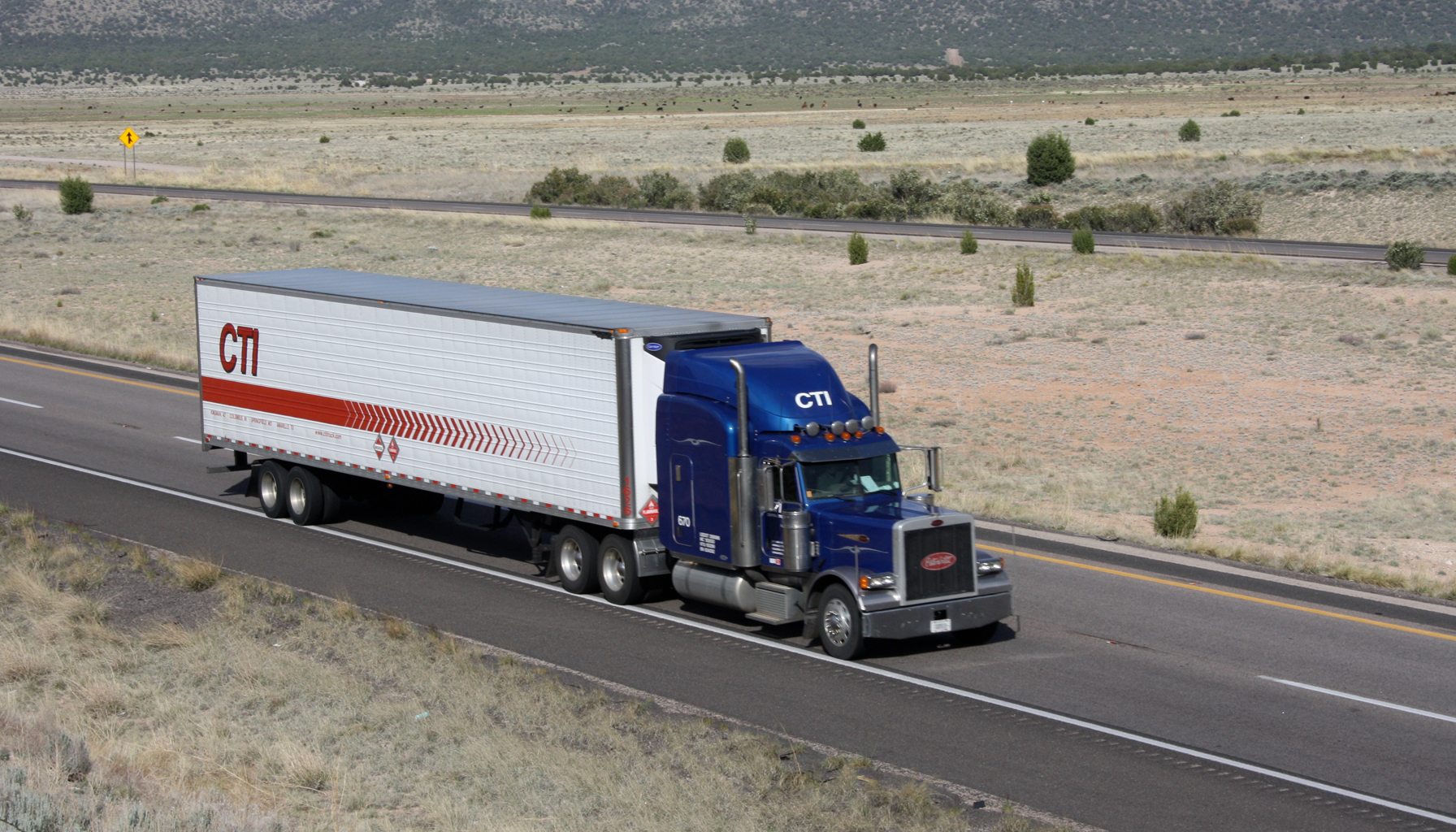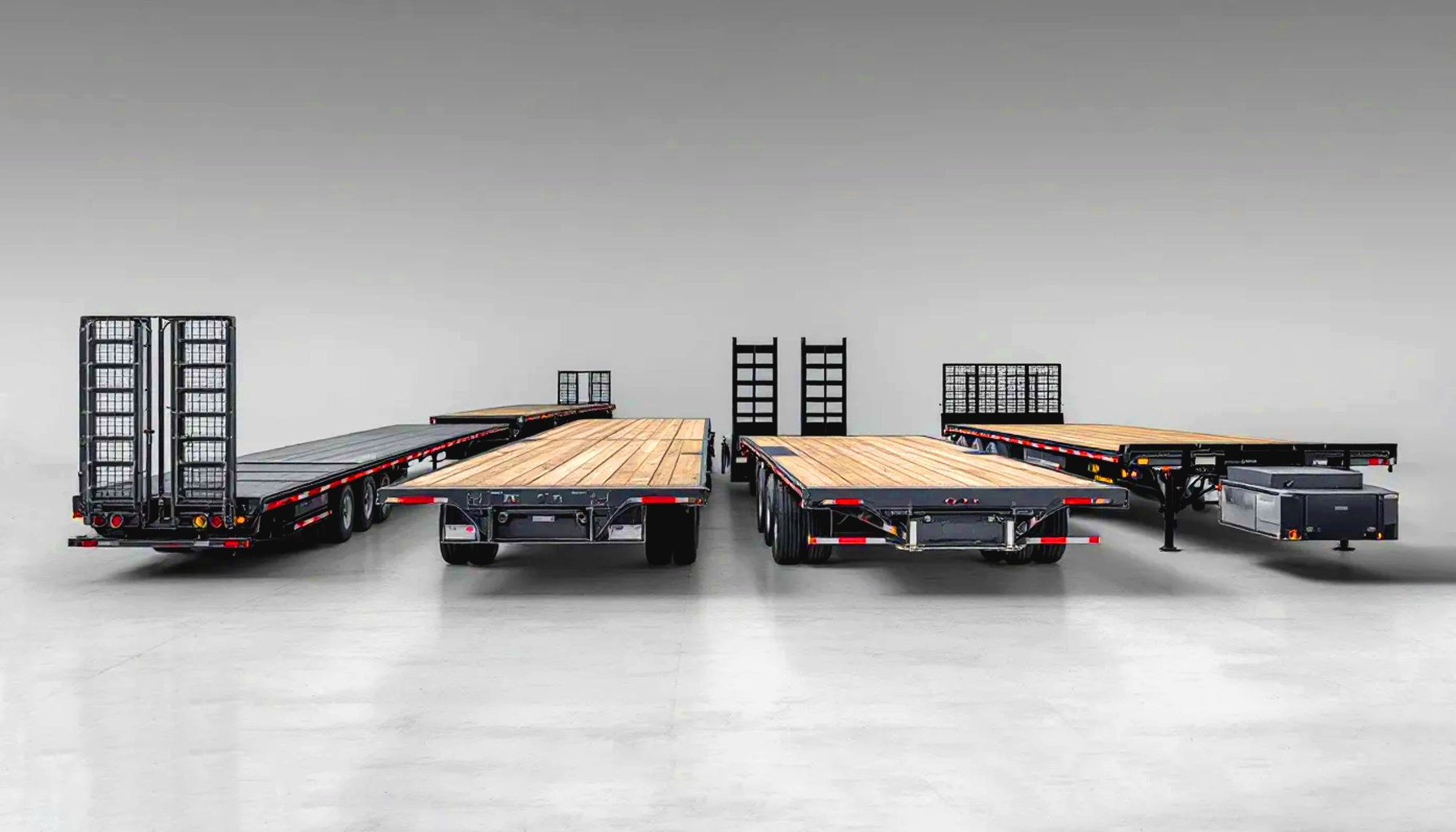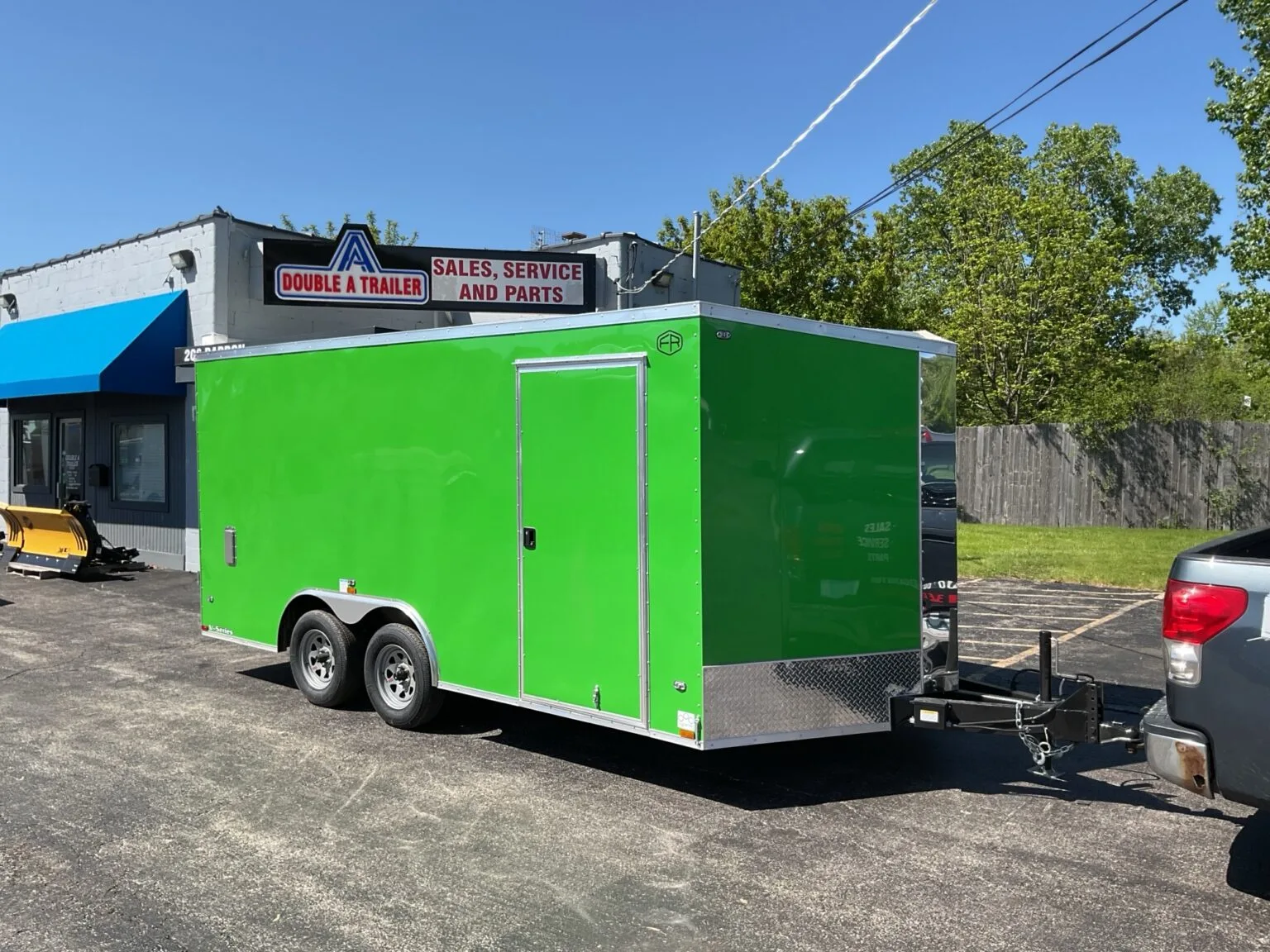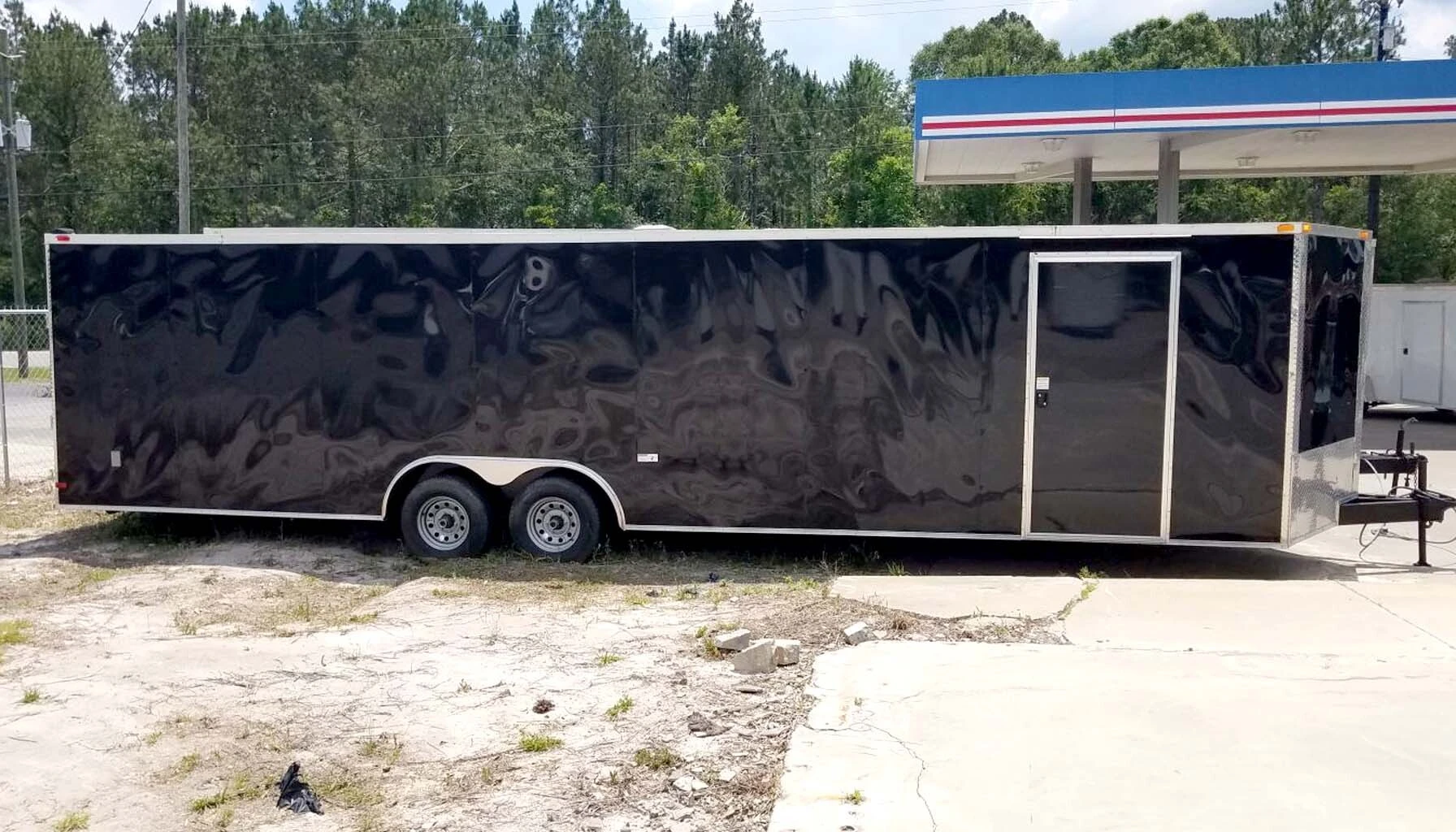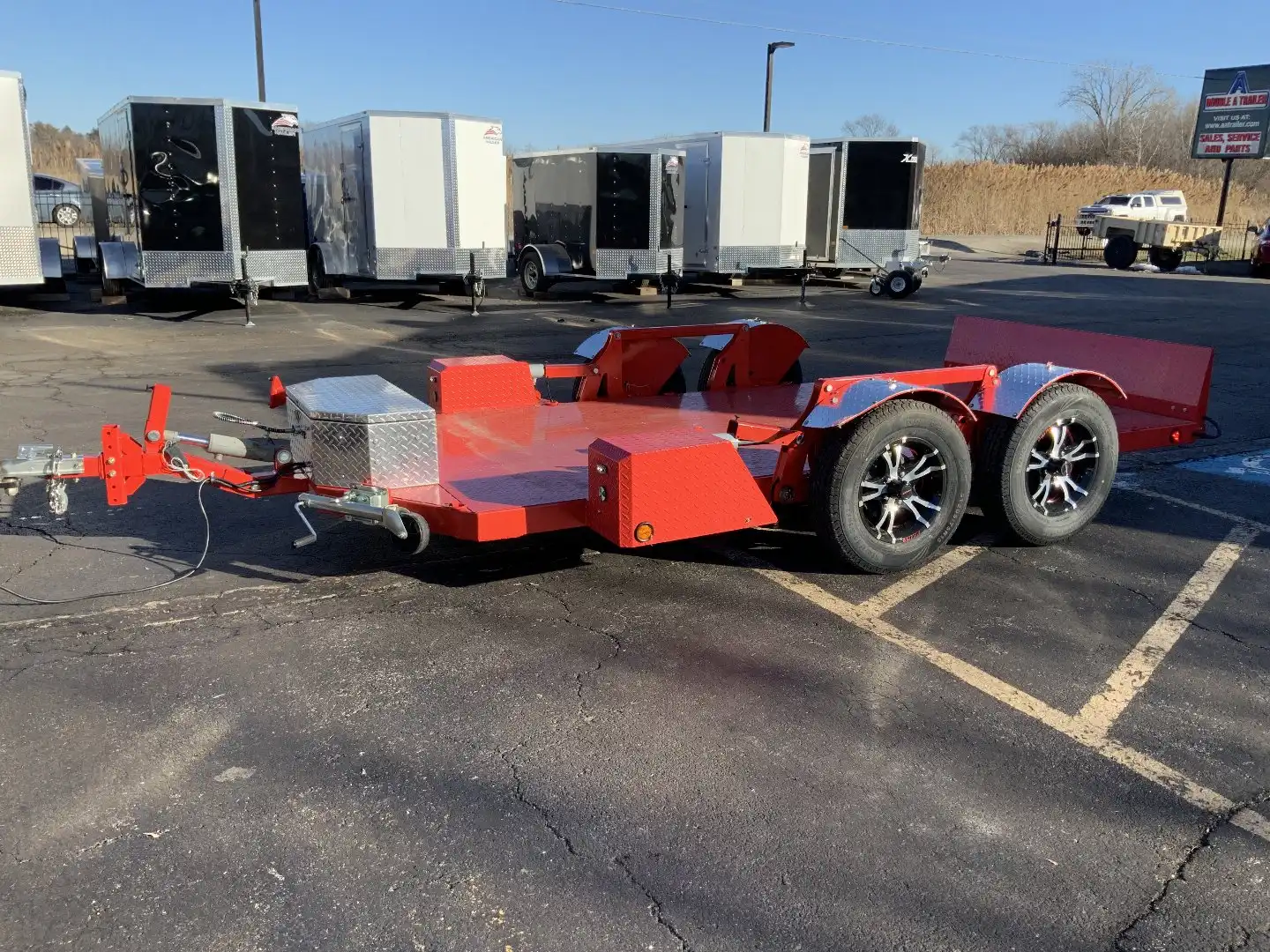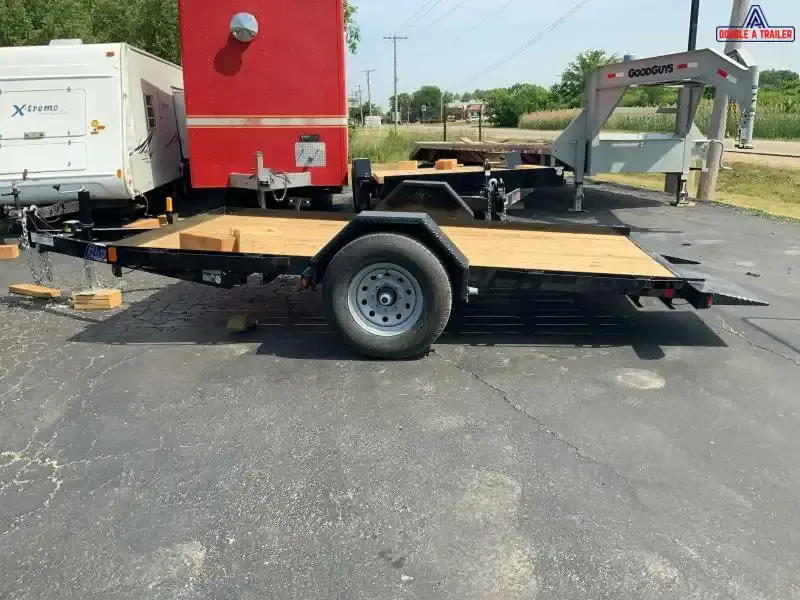Looking for a trailer but confused by all the different types of trailers? It’s easy to feel a little lost when you see how many trailer options are out there, each with a different size, used for a different purpose, by different people.
The tricky part? Picking the wrong one can cost you time, money, and a whole lot of headaches. You don’t want to show up to a job with a trailer that’s too small or hit the road with something that can’t handle your gear.
That’s why this trailer classification guide breaks down every major trailer type in real-world terms, so you know exactly what works for your needs.
Different Types Of Trailers
Have you ever noticed how trailers kind of all look the same… until you actually need one? That’s when the questions hit: Do I need sides? A ramp? Will this even hold my stuff? Truth is, trailers aren’t one-size-fits-all.
So instead of tossing random names at you, here’s a guide to various types of trailers. What they’re built for, when to use them, and how not to end up with something totally wrong for the job.
Let’s get into it, you’ll know exactly what to look for by the end.
Types of Semi Trailers
Semi-trailers are the backbone of the commercial freight world. If you’re transporting goods across long distances or handling freight contracts, this is your go-to category.
There are many different types of semi trailers, each designed for specific loads. The key here is matching your load to the trailer’s floor space, weight limit (typically up to 80,000 lbs gross vehicle weight), and whether you need open or enclosed protection.
- Standard Semi-Trailer (Dry Van):
This is your everyday trailer that is typically 48–53 feet long. It’s closed all around to protect what’s inside like clothes, furniture, and packaged stuff. They’re ideal for general freight because of their secure, weather-protected structure. - Container Trailer:
These carry those big metal containers you see on ships and trains. They’re fast and easy to load, as you simply lift the entire box on or off. These fit standard 20ft or 40ft containers and reduce loading time drastically. - Reefer Trailer (Refrigerated):
This one’s basically a fridge on wheels. It keeps things cold or frozen, like meat, milk, or even medicine. You set the temp, and it stays there. Great for long hauls where freshness matters. - Tipper Trailer:
Also called a dump trailer, this one tilts its bed to unload cargo. They’re commonly used in construction and agriculture for loose materials like sand, gravel, or grain. - Low Loader Trailer:
This one sits super low to the ground, so you can carry tall and heavy stuff like bulldozers or big machines without worrying about height limits. It’s built tough and keeps things steady.
Here’s the guide on how you can Practice Safe Trailer Towing with These 4 Tips
Types of Travel Trailers
These trailers serve you like mini home on wheels you can tow behind your vehicle. Whether you’re camping for a weekend or road-tripping across the States, there’s a trailer for every kind of traveller.
- Conventional Travel Trailer:
The most versatile and widely available style. Sizes range from 15 to 35 feet and can be towed by SUVs or trucks. Most have a bed, a bathroom, a little kitchen, and sometimes slide-outs that give you more space to move around. - Fifth-Wheel Trailers:
This one’s a step up in size and stability. It hooks into the bed of a pickup truck instead of behind it, which gives you a smoother ride and more room inside. They quite feel like mini apartments with full living rooms, big kitchens, and tons of storage. If you’re travelling a lot or living on the road, this is a solid choice. - Teardrop Campers:
Small, aerodynamic, and super cute. Typically 8–12 feet long, they sleep two people and come with a basic sleeping area and a rear hatch kitchenette. Tows easily with a sedan or small SUV. - Pop-Up Campers:
These fold down flat for towing, then pop up into a tented camper. Lighter than standard trailers, most models include canvas sides, expandable beds, and small kitchens. They usually weigh under 2,000 lbs.
Types of Flatbed Trailers
If you’re hauling something big, bulky or odd-shaped you need flatbed trailers. They’re open on all sides, which makes them extremely easy to load and unload. When you’re hauling serious weight, the types of 18 wheeler trailers available can make or break the job. From dry vans to step decks, each trailer is designed for a specific kind of load.
- Standard Flatbed:
You’ll see these everywhere from construction sites to industrial yards. Its a long flat platform on wheels usually around 48 to 53 feet long. No sides, no ceiling. It’s designed to handle items that don’t need weather protection and can be stacked or strapped down easily. - Extendable Flatbed (Stretch Trailers):
These can stretch out to carry extra-long cargo like steel beams or wind turbine blades. You can load extra-long freight without needing a special permit every time. Plus, when you’re not hauling giants, you can compress it back down to standard length. Super flexible. - Drop Deck Trailers (step deck):
A step deck trailer has two levels: the front (over the tractor axles) is higher, while the rear deck drops down lower to the ground. This lower rear deck lets you carry taller cargo without worrying about bridge or tunnel clearance. - Double Drop Trailer:
Double drop trailers have an even lower “well” section in the middle, nestled between the front and rear axles. That sunken section gives you extra clearance for cargo that’s really tall, but still needs to stay legal on the road.
Types of Utility Trailers
Utility trailers are a good start for anyone who needs to haul but doesn’t need a semi. They’re affordable, versatile, and easy to customize with toolboxes or racks. When it comes to job sites, landscaping crews, or delivery runs, these are the most common commercial trailer types you’ll see out on the road.
- Single-Axle Utility Trailers:
You’ll spot these behind pickup trucks doing quick jobs on weekends. They are smaller lighter, and only have one axle. Also, they are super easy to park, tow, and store. Most models run from 4×8 to 6×12 feet and are great when you don’t need a ton of space or weight capacity. - Tandem-Axle Utility Trailers:
Two axles mean better weight distribution, higher payload, and way smoother handling on highways. These are a solid pick if you’re hauling heavier tools or need something stable for longer trips. Most models also come with electric brakes, so you’ve got more control when things get heavy. - Landscape Utility Trailers:
This one’s made specifically for lawn care crews. It usually comes with mesh sides, a rear ramp gate, and dedicated holders for trimmers, blowers, and other tools. Built for easy organization and quick access, it’s a trailer that works as hard as you d - Off-Road Utility Trailers:
Off-road utility trailers are built tough. Big tyres, solid frames, and parts that can handle bumps without falling apart. You can drag them through trails, rough roads, and even job sites way out in the middle of nowhere, and they’ll keep up.
Types of Cargo Trailers
Need to keep your haul safe, dry, and secure? Cargo transport trailers are the best option for you. Open or enclosed trailers, both are just meant to make your life easier. And when you’re trying to figure out the right types of trailers for hauling, it really just depends on what you’re moving, how heavy it is, and what you’re pulling it with.
- Enclosed Cargo Trailer:
It is one of the types of trailers for trucks that have four walls, a roof, and a lockable door—perfect for keeping your stuff safe from weather and theft. They come in various sizes, from compact 4×6 models to massive 8.5×24 haulers. - Open Cargo Trailer:
These are the open-deck trailers with short sides or railings, super simple and easy to handle. They’re lighter than enclosed ones and great for hauling stuff that’s big or a weird shape. Just keep in mind, everything’s out in the open, so you’ll need to strap it down tight.
Get to know the Top 5 Benefits Of Using Cargo Enclosed Trailers
Types of Dump Trailers
If you’re hauling loose material and want to unload fast, dump trailers do the heavy lifting for you. From gravel to debris, these trailers make tough jobs way easier. When the load is too big for a regular trailer, that’s where modular trailer types come in. You can add or remove axles, extend the bed, and adjust the setup to carry massive, oversized cargo.
- Standard Dump Trailer:
This one’s a game-changer if you deal with bulk loads. It’s built with a hydraulic lift that tips the bed backwards to dump out whatever you’re hauling: gravel, soil, debris, you name it. - Side Dump Trailer:
Instead of tipping backwards, this one dumps to the side, which gives you more control over where your load ends up. It also unloads faster and is less likely to tip over than rear-dumping styles, especially when parked on uneven ground. - Bottom Dump Trailer (Belly Dump):
This trailer drops the load straight from the belly. The gates underneath open and let the material pour out evenly as the truck moves forward. It’s especially popular for roadwork where you need to lay out gravel or sand in a smooth, consistent line.
Types of RV Trailers
RV trailers bring home with you on wheels. Whether you’re travelling full-time or just sneaking off for a weekend, there’s an RV trailer for your style and budget. These are some of the most common towable trailers USA, easy to hitch up, drive across states, and park wherever the road takes you.
- Toy Haulers:
Half living space, half garage. These RVs come with a rear ramp and built-in cargo area for your ATVs, dirt bikes, or even golf carts, plus a cozy kitchen, bed, and bathroom up front. - Hybrid Trailers:
There are different types of hybrid trailers that offer a mix between a hard-sided travel trailer and a pop-up camper. They’ve got solid walls for insulation and pop-out tent sections for extra sleeping space. Light to tow but still roomy inside.
Types of Trailers for Cars
Whether you’re moving a classic car to a show or hauling your everyday ride across state lines, the right trailer makes all the difference.
- Car Hauler Trailers:
These are open flatbed trailers built specifically for vehicles. They usually have loading ramps, tie-down points, and low ground clearance for easy drive-on access. - Enclosed Car Trailers:
Enclosed trailers keep your car safe from rain, dirt, and people who shouldn’t be looking. They cost more than open ones, but if your car’s valuable, it’s the safeest option.
Wrapping Up!
Now you’ve got to know every major type of trailer, so you don’t have to bounce between five blogs to piece it all together. But even with all that info, the truth is: that a good trailer is only as good as the people who built it.
That’s why Double A Trailers is renowned for its heavy-duty hauling trailers. Based right here in Grayslake, IL, they design trailers with real hauling problems in mind like durability, axle strength, custom builds and practical features. So when you’re ready to stop guessing and start hauling smarter?
Visit Double A Trailers and choose the perfect trailer for your needs.
FAQ’s
1. What type of trailer is best for hauling heavy equipment?
If you’re moving things like tractors, excavators, or construction gear, go for a gooseneck, drop-deck, or lowboy trailer. They’re built to handle heavy loads and give you better balance and clearance, especially for tall or wide machines.
2. What’s the difference between flatbed and enclosed trailers?
Flatbeds are open—super easy to load from any side, making them perfect for oversized items that can withstand the weather. Enclosed trailers are like rolling storage units, your tools and gear stay dry, locked up, and protected the whole way.
3. What are the different types of military trailers?
Military trailers are typically built for off-road conditions and high-stress loads. Common types include utility trailers, tanker trailers, and heavy equipment haulers.
